
Could I be HIP? (Histamine Intolerant Person)
Answer the questions below to see if you may have a Histamine Intolerance.*
This is not a diagnosis and is a screening tool only.

Do you avoid drinking even a little alcohol for fear of how you feel during or after?

Do you enjoy champagne and red wine, but find that your body does not?

Do certain kinds of food cause you to experience digestive discomfort?

Do fermented foods like aged meats and cheeses leave you feeling sluggish?

Do you feel unwell after eating leftovers, even though you felt fine when you ate the same meal fresh?
If you answered yes to any of these questions, you may have an Histamine Intolerance.* Please consult your healthcare provider.

What are the causes Histamine Intolerance?
Dietary Histamine Intolerance is caused by the imbalance between histamine and the histamine degrading enzyme Diamine Oxidase (DAO). Certain foods and drinks, especially those that are fermented, can contribute significantly to this imbalance.
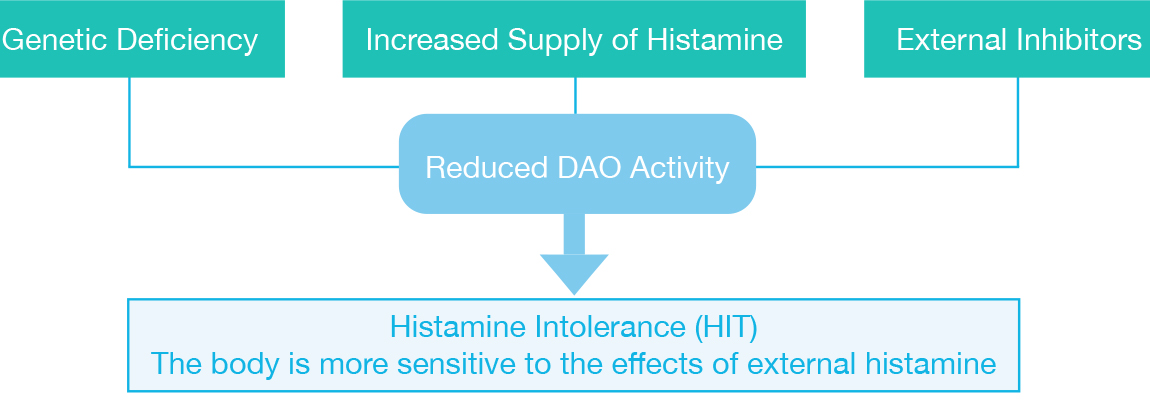
Allergy or Intolerance?
While the reactions of Histamine Intolerance (HIT) may mimic allergic reactions, HIT is not a classical food allergy. Rather, research suggests that HIT is mediated by a deficiency in levels and/or activity of the Diamine Oxidase enzyme.
Allergy – An immune system response to a specific allergenic substance. Symptoms can appear quickly with very little exposure.
Intolerance – A reaction that does not involve an immunological response. Reactions can take time to appear and increase upon level of exposure.

Histamine-Rich Foods
- Chocolate
- Cheese (all types, especially aged)
- Sauerkraut
- Aged, cured, processed and fermented meats
(pepperoni, sausage, bacon) - Tomatoes/Ketchup
- Vinegar (all types)
- Alcoholic beverages
- Tuna
- Mahi-mahi
- Anchovies
- Sardines
- Shellfish
- Avocado
- Tomatoes
- Bananas
- Eggplant
- Spinach
- Walnuts
- Cashews
- Peanuts
*Not a complete list
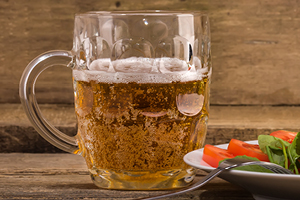
Histamine Liberators
- Berries (especially strawberries)
- Alcoholic Beverages
- Milk and dairy products
- Citrus fruits
- Strawberries
- Kiwi
- Bananas
- Plums
- Chocolate
- Shellfish
- Nuts
- Papaya
- Pineapple
- Tomatoes
- Wheat germ
*Not a complete list

Alcoholic beverages present a “triple-threat” to histamine levels by:
- Introducing excess histamine levels
- Liberating histamine
- Blocking the activity of DAO in the gastrointestinal tract.
The Histamine Digest Family of Products may help!
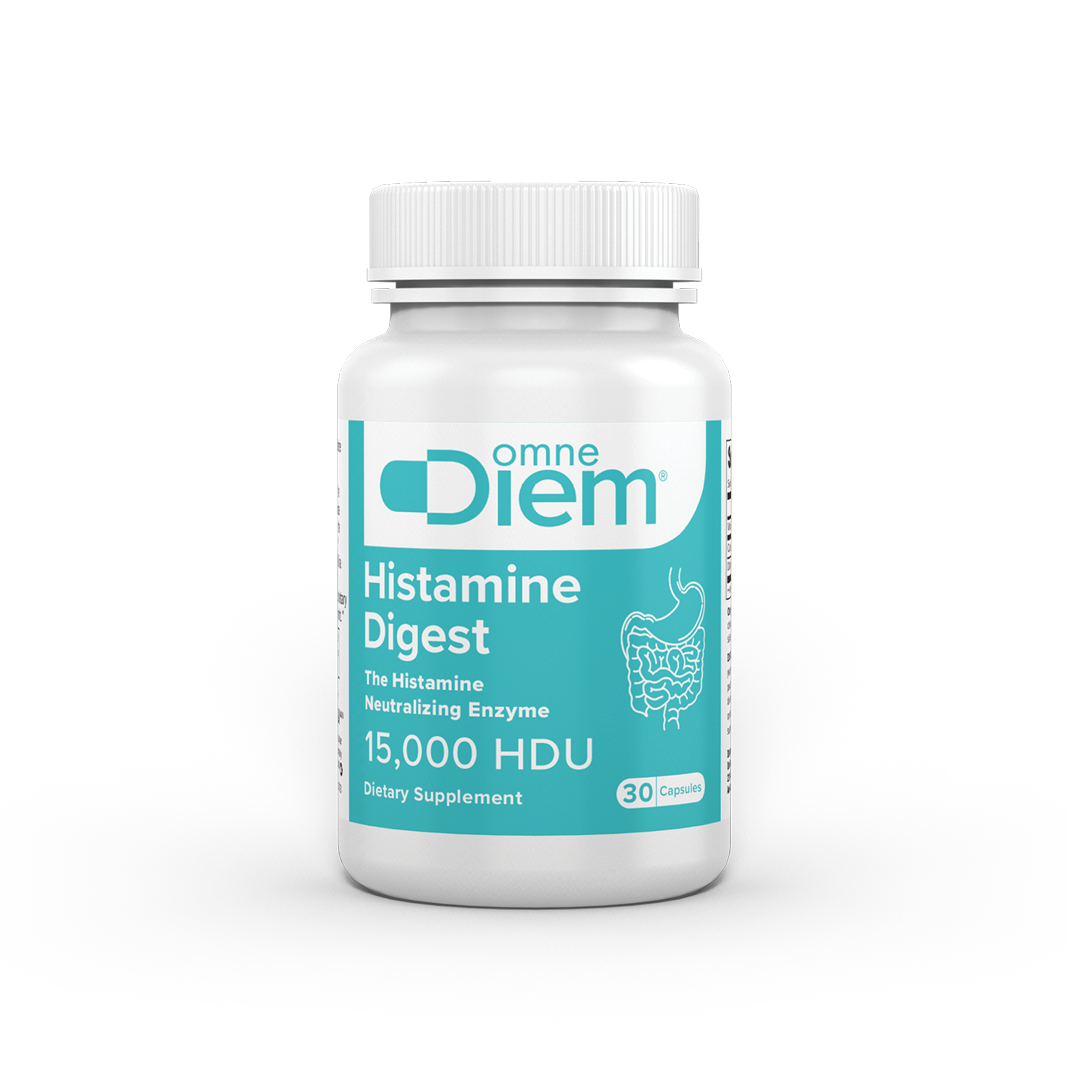
15,000 HDU per capsule
With Vitamin C and Catalase
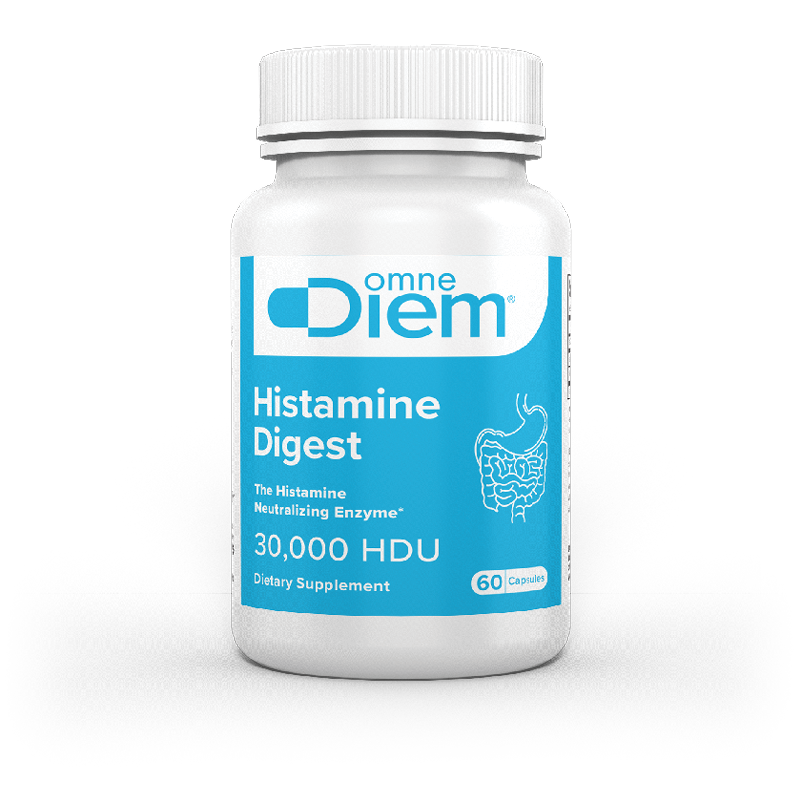
30,000 HDU per capsule
With Vitamin C and Catalase
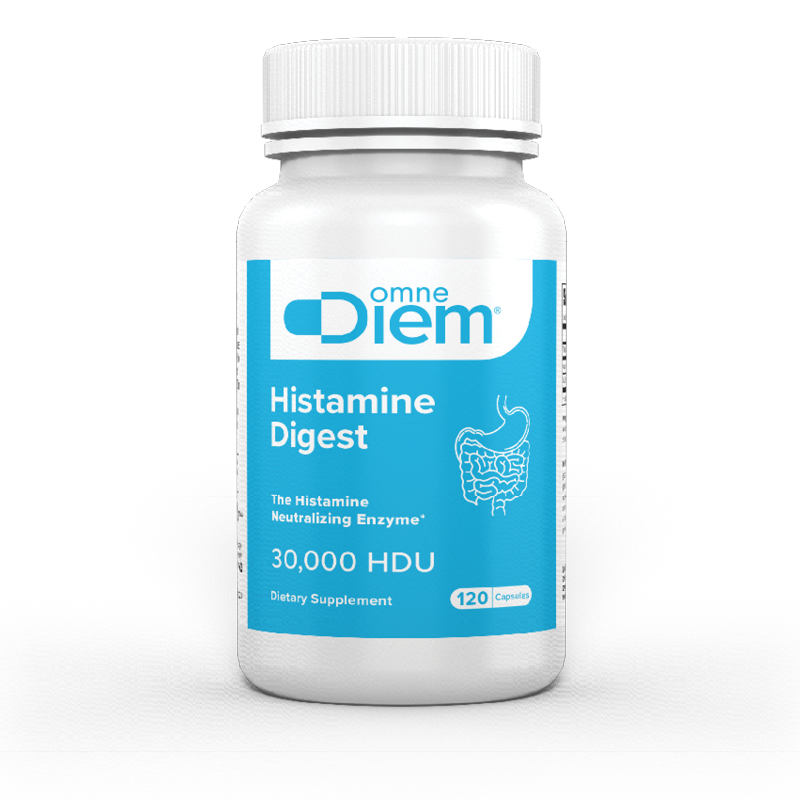
30,000 HDU per capsule
With Vitamin C and Catalase
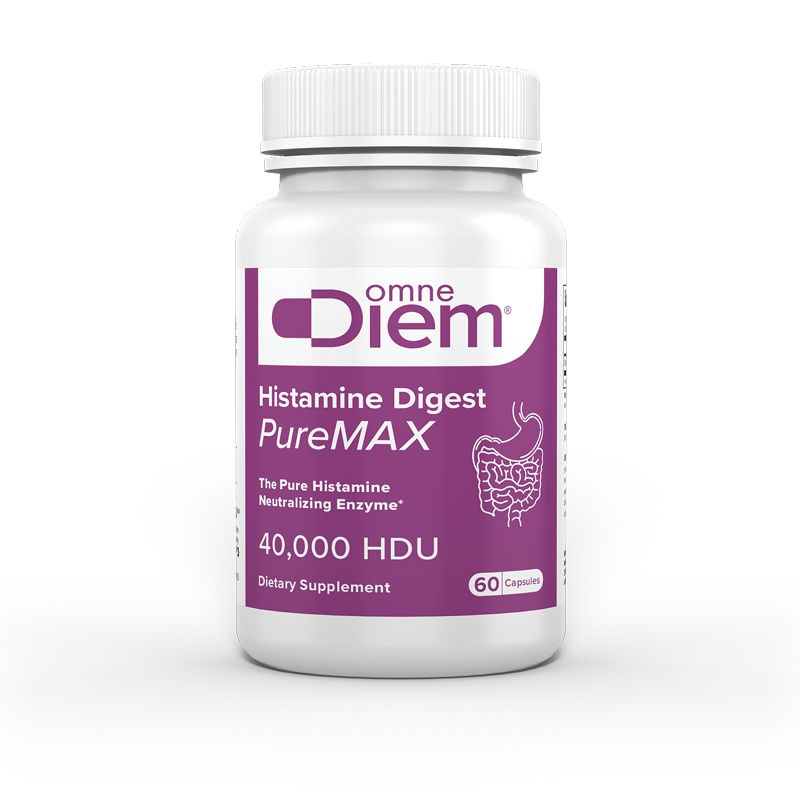
40,000 HDU per capsule
For those with multiple sensitivities and higher DAO needs.
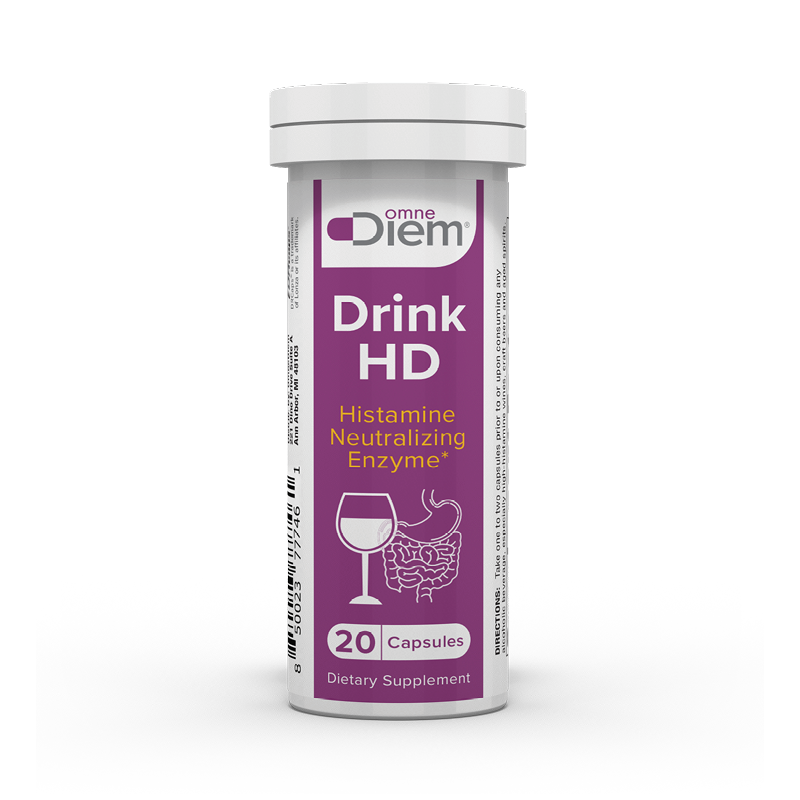
15,000 HDU per capsule
Convenient travel tube, take before, during and after for a good night and better tomorrow.*
Now available nationwide!
What is HDU?
The term Histamine Digesting Unit (HDU) is the officially recognized quantification of the enzymatic activity of Diamine Oxidase, the enzyme that neutralizes dietary histamine in the gut. Enzymes are a type of protein that play a role in many bodily functions (like dietary histamine neutralization), and in the case of diamine oxidase, are measured by their ability to digest dietary histamine. The number of Histamine Digesting Units is dependent on the activity of the enzyme, as well as the amount of porcine kidney present during the extraction process.
